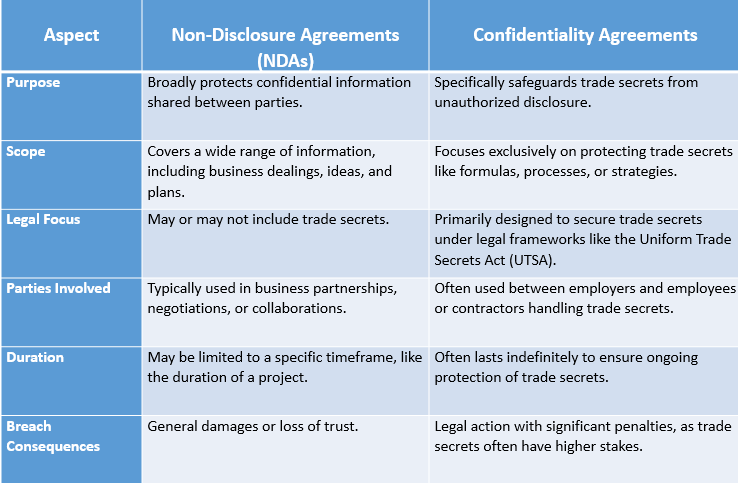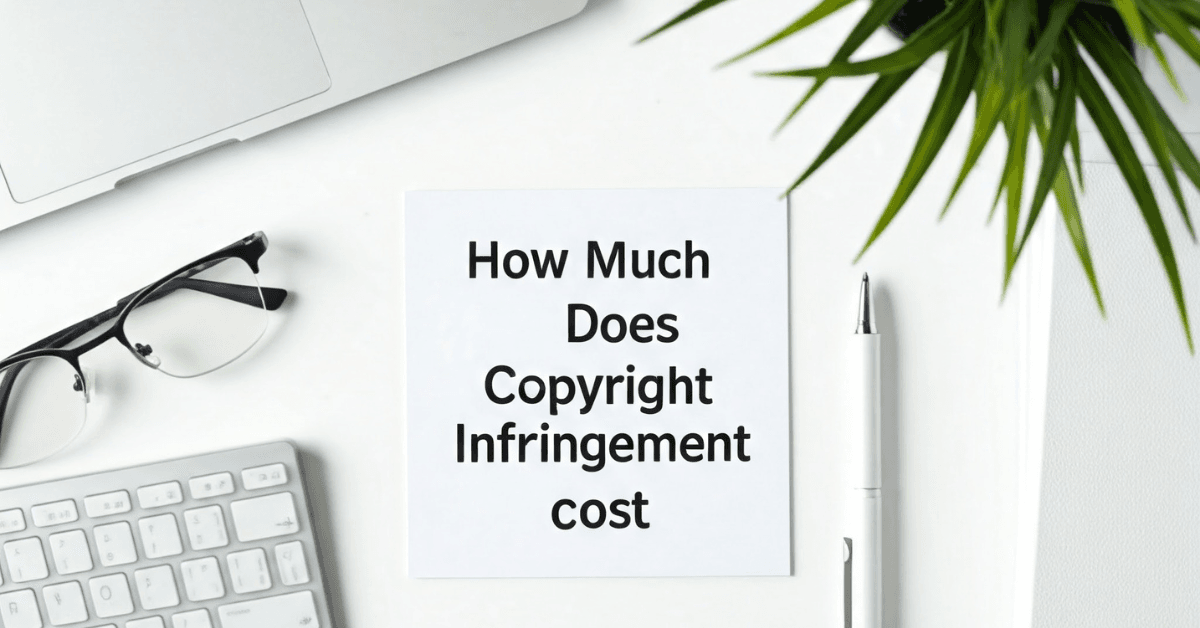Table of Contents
Trade secrets are the lifeblood of many businesses. They can include anything from unique recipes to innovative designs. But how can companies protect trade secrets from falling into the wrong hands? The answer lies in Trade Secret Confidentiality Agreements. These agreements are critical tools for safeguarding valuable business information.
This guide will cover the importance of these agreements. It will also explain how to draft them and the key strategies to ensure trade secret protection.
What Are Trade Secret Confidentiality Agreements?
A Trade Secret Confidentiality Agreement is a legal document. It is also commonly known as a Non-Disclosure Agreement (NDA). It keeps sensitive business information private. It binds employees, contractors, or partners to confidentiality. They cannot share trade secrets with unauthorized people or entities.
Without such an agreement, businesses risk losing their competitive edge. After all, wouldn’t you want to protect what makes your business unique?
Why Are They Important?
Trade secrets are not protected automatically. Businesses must take proactive measures to protect their trade secrets, unlike trademarks or patents. Confidentiality agreements are the first defense against unauthorized disclosure.
Many courts have ruled that companies must protect their trade secrets. If they fail to do so, they cannot claim legal protection for trade secret misappropriation. This includes using confidentiality agreements. Case law like PepsiCo, Inc. v. Redmond underscores the importance of such agreements in legal disputes.
Difference Between NDA and Confidentiality Agreements
Non-Disclosure Agreements (NDAs) and Confidentiality Agreements are similar but often overlap. Their scopes can vary, leading to differences in how they are used.

Note: In practice, “Non-Disclosure Agreement” and “Confidentiality Agreement” often mean the same. The details of the agreement depend on the type of information that the party protects.
It’s vital to define explicitly the scope, duration, and duties in the agreement. This ensures all confidential information, especially trade secrets, receives proper protection.
Key Elements of a Trade Secret Confidentiality Agreement
- Definition of Trade Secrets: Clearly define what constitutes a trade secret. For example, is it your client database, formulas, or marketing strategies? Be specific to avoid ambiguity.
- Obligations of the Recipient: The recipient must not share, use, or copy the info without permission.
- Duration of Confidentiality Specify how long the agreement will remain in force. Some trade secrets require lifelong protection, while others may only need a set timeframe.
- Penalties for Breach: State the consequences of violating the agreement. Include potential legal actions and damages.
How to Draft Effective Trade Secret Confidentiality Agreements
Drafting confidentiality agreements for trade secrets requires attention to detail. Here’s how to make them robust:
1. Use Simple Language Avoid legal jargon. The agreement should be clear and understandable to all parties involved.
2. Include Examples: Use examples of trade secret confidentiality agreements to ensure comprehensive coverage. For instance, include clauses specific to software codes or customer preferences.
3. Differentiate from NDAs: Distinguish a Trade Secret Confidentiality Agreement from NDAs. While both protect sensitive information, confidentiality agreements focus specifically on safeguarding trade secrets.
Trade Secret Protection Strategies

- Confidentiality Agreements: Always ensure that employees, contractors, and business partners sign confidentiality agreements. They must keep trade secrets private. These agreements explain the consequences of unauthorized disclosure.
- Limited Access: Grant access to trade secrets only to those who absolutely need it. Password protection and access controls greatly reduce the risk of leaking sensitive info.
- Employee Training: Train your employees regularly on the importance of protecting trade secrets. Help them understand what a trade secret is. Teach them how to keep this information safe.
- Physical and Digital Security: Use locks, secure storage, and surveillance for physical security. Pair these with digital tools like encryption, firewalls, and secure networks. This approach protects both physical and electronic trade secrets.
- Regular Audits and Updates: Regularly check how well trade secrets are protected. Also, update security protocols to tackle new risks or business changes.
These strategies will help you protect your trade secrets. They will keep your business ahead of the competition.
Enforcing Trade Secret Confidentiality Agreements
What happens if someone breaches the agreement? How do you take action? Enforcement begins with a strong agreement. Courts often look for evidence of reasonable efforts to protect trade secrets. This is where case law like E.I. DuPont De Nemours & Co. v. Kolon Industries, Inc., 803 F. Supp. 2d 469 (E.D. Va. 2011) is relevant.
In this case DuPont once accused Kolon Industries of trade secret misappropriation, theft of confidential business information, conspiracy, and other business torts related to DuPont’s para-aramid fiber Kevlar®. Kevlar (para-aramid) is a strong, heat-resistant synthetic fiber.
A South Korean industrial firm, Kolon Industries Inc., pleaded guilty in a Virginia federal court. It conspired to steal trade secrets related to DuPont’s Kevlar technology. The court ordered Kolon to pay $85 million in fines and $275 million in restitution for misappropriating trade secrets.
This case shows the need for strong trade secret protections. It also highlights the serious risks of breaching confidentiality agreements.
To enforce trade secret confidentiality agreements, companies can:
- Issue cease-and-desist letters.
- Seek injunctions to prevent further breaches.
- File lawsuits for damages.
Real-Life Applications in Employment Contracts

Many businesses include trade secret confidentiality agreements in employment contracts. This ensures employees don’t share sensitive information. This practice ensure protecting Trade Secrets When employees Depart.
Such clauses have proven effective in legal disputes, as seen in International Business Machines Corporation (IBM) v. Papermaster, where IBM suing its ex-executive, Mark Papermaster, for breaching his contract and stealing trade secrets. Papermaster took a job at Apple while still under a non-compete with IBM. So, IBM sought a preliminary injunction to prevent him from working at Apple.
Common FAQs on Trade Secret Confidentiality Agreements
No. NDAs are broader. They can cover general business dealings. Confidentiality agreements focus only on protecting trade secrets.
Templates are a good start. But, seeking legal advice is always advisable so that your trade secret is protected in every legal way.
Act quickly. Consult legal experts. Gather evidence of the breach. Then, take legal action.
It depends on the agreement’s terms. Some last indefinitely, while others may specify a set period.
Without a confidentiality agreement, it’s hard to protect the trade secret.
Conclusion
Protecting your business’s trade secrets is crucial in today’s competitive world. A good Trade Secret Confidentiality Agreement can protect your unique assets. It can also prevent unauthorized disclosures. This guide’s tips will help you protect your business’s most important things.
If you need help with agreements or trade secret disputes, consult a lawyer who specializes in this area. They can help ensure your agreements are comprehensive and enforceable.




